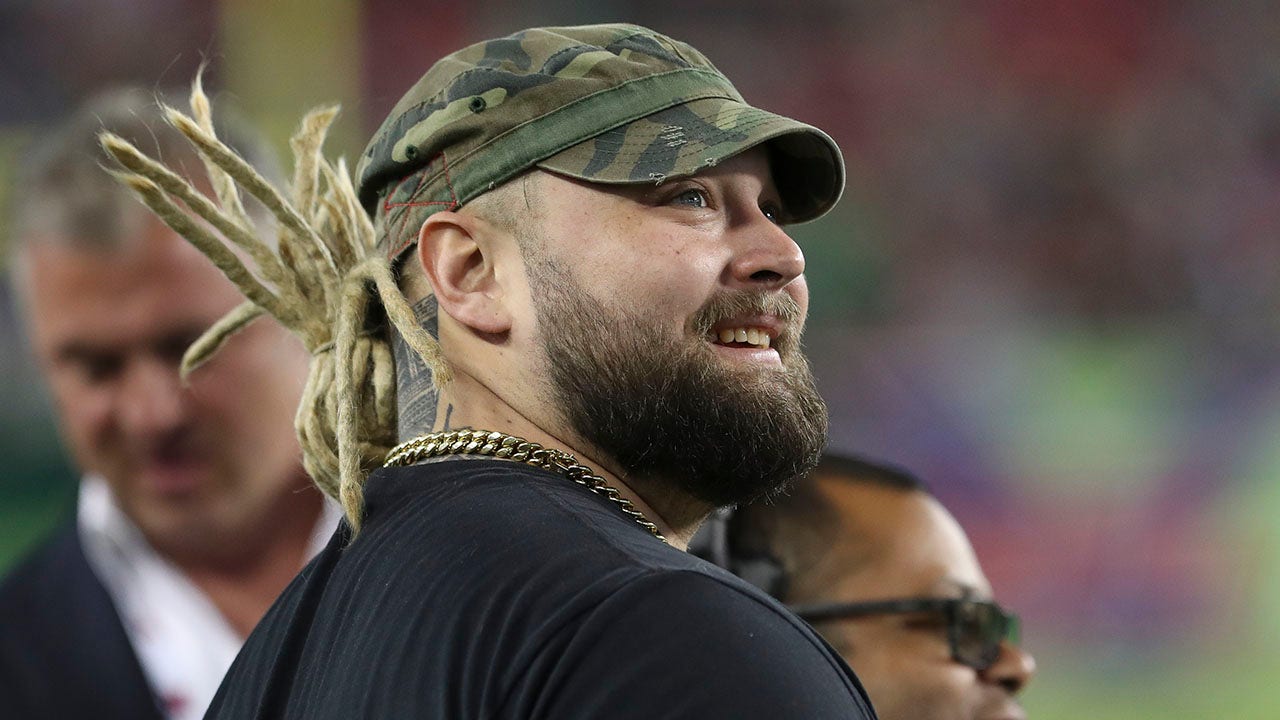In an age where the specter of bullying looms large, are we truly prepared to confront its insidious nature and devastating consequences? The arrest of Aubrey Wyatt on bullying charges isn't just a local story; it's a stark reflection of a societal crisis demanding immediate and comprehensive action.
The ripples caused by Aubrey Wyatt's arrest are spreading far beyond the confines of Springfield High School. This incident, a direct result of sustained bullying behavior, underscores a painful truth: the digital age has amplified the reach and intensity of bullying, leaving countless victims feeling isolated and vulnerable. Wyatt's case is a pivotal moment, one that forces us to re-evaluate our approach to accountability and prevention.
| Personal and Professional Details | Information |
|---|---|
| Name | Aubrey Wyatt |
| Age | 17 |
| Location | Springfield, USA |
| School | Springfield High School |
| Interests | Sports, Social Media |
| Legal Status | Arrested on Bullying Charges |
| Accusations | Multiple Incidents of Bullying Against a Fellow Student |
| Community Response | Widespread Concern and Calls for Accountability |
| Potential Legal Consequences | Fines, Community Service, Juvenile Detention |
| Reference Link | StopBullying.gov |
The question that now hangs heavy in the air is: what factors contributed to Aubrey Wyatt's actions, and how can we, as a community, ensure that no other young person treads this destructive path? Understanding the root causes of bullying, fostering empathy, and creating robust support systems are essential steps toward dismantling the culture of aggression and intimidation. The spotlight is now on us to examine the broader implications of bullying and address its systemic nature within our society.
- New Desi Mmscom The Ultimate Guide To Exploring Indias Digital Entertainment Hub
- Exclusive Scoop Camillaxaraujo Leaked Ndash The Full Story Behind The Viral Phenomenon
The series of events leading to Aubrey Wyatts apprehension paint a disturbing picture of sustained harassment. The reports detail a pattern of bullying behaviors directed towards a classmate, persisting over a significant period. The nature of the bullying, it is alleged, involved a combination of in-person taunts, social exclusion, and cyberbullying tactics that amplified the victim's distress. As the victim bravely came forward, confiding in friends, family, and school authorities, a groundswell of concern began to build, culminating in formal complaints and ultimately, the involvement of law enforcement.
The alleged bullying by Aubrey Wyatt did not occur in a vacuum. It took place within a specific social ecosystemSpringfield High School and the wider Springfield community. To fully grasp the context, it's crucial to examine the school's existing anti-bullying policies, the level of awareness among students and staff, and the overall climate of the school environment. Was bullying a known problem at Springfield High? Were there adequate reporting mechanisms in place? Did students feel safe enough to come forward with their experiences? These are critical questions that demand honest answers.
The response from the Springfield community was anything but muted. Parents, galvanized by the victim's courage and deeply concerned about the safety of their children, voiced their outrage at school board meetings and on social media platforms. Teachers and administrators, facing mounting pressure, pledged to take swift and decisive action. Students organized anti-bullying campaigns, promoting kindness and empathy within the school. The collective voice of the community made it clear: bullying would not be tolerated.
- Hdhub4u Ltd The Ultimate Streaming Experience
- Brandi Passante Leaked The Untold Story You Need To Know
Social media, often a breeding ground for cyberbullying, became a powerful tool for raising awareness and demanding accountability in this case. Hashtags related to the incident trended locally, with users sharing stories, offering support to the victim, and calling for stricter anti-bullying measures. While social media can be a double-edged sword, in this instance, it played a significant role in amplifying the community's concerns and holding Aubrey Wyatt accountable for their actions.
The arrest of Aubrey Wyatt has far-reaching legal implications, highlighting the fact that bullying is not merely a schoolyard issue, but a matter that can have serious legal ramifications. Depending on the specific nature and severity of the bullying behavior, Wyatt could face a range of charges, from harassment and intimidation to assault. The legal consequences could include fines, community service, mandatory counseling, and in more severe cases, juvenile detention. The involvement of the legal system underscores the gravity of bullying and serves as a deterrent to others who might engage in similar behavior.
The legal proceedings in the Aubrey Wyatt case are likely to be complex and multifaceted. The prosecution will need to present evidence of the bullying behavior, establish a clear link between Wyatt's actions and the victim's distress, and demonstrate the extent of the harm caused. The defense, on the other hand, may argue that Wyatt's actions were misinterpreted, that the victim exaggerated the severity of the bullying, or that mitigating circumstances exist. The outcome of the case will depend on the strength of the evidence presented by both sides and the interpretation of the law by the judge or jury.
Beyond the immediate legal consequences, Aubrey Wyatt's arrest raises broader questions about the role of schools in preventing and addressing bullying. Do schools have adequate resources to train teachers and staff to identify and respond to bullying behavior? Are anti-bullying policies clearly defined and consistently enforced? Do schools provide sufficient support for both victims and perpetrators of bullying? These are crucial questions that school administrators and policymakers must address to create safer and more supportive learning environments for all students. The Springfield School District is now under immense pressure to demonstrate that it is taking bullying seriously and implementing effective measures to prevent future incidents. This may involve revising existing policies, providing additional training for staff, and increasing the availability of counseling services for students.
The experiences of bullying victims are often marked by a sense of isolation, fear, and helplessness. The constant harassment and intimidation can erode their self-esteem, leading to anxiety, depression, and even suicidal thoughts. Many victims struggle to concentrate in school, experience sleep disturbances, and withdraw from social activities. The long-term effects of bullying can be devastating, impacting their relationships, careers, and overall well-being. It is crucial to recognize that bullying is not just a fleeting childhood experience; it can have lasting consequences that shape a person's life trajectory.
The mental health challenges faced by bullying victims often require professional intervention. Therapists and counselors can provide a safe space for victims to process their emotions, develop coping strategies, and rebuild their self-esteem. Cognitive behavioral therapy (CBT) can be particularly helpful in addressing the negative thought patterns and behaviors that often accompany bullying experiences. Support groups can also provide a sense of community and validation, allowing victims to connect with others who have shared similar experiences.
The economic costs of bullying are often overlooked, but they are significant. Bullying victims may require medical treatment for physical injuries, mental health counseling, and academic tutoring. Schools may need to invest in additional security measures and anti-bullying programs. Law enforcement agencies may need to investigate bullying incidents and prosecute perpetrators. The cumulative costs of bullying can strain already limited resources, diverting funds from other essential programs.
In the wake of the Aubrey Wyatt case, the Springfield community is grappling with the question of how to prevent future incidents of bullying. One approach is to implement comprehensive anti-bullying programs in schools, teaching students about the different forms of bullying, the impact of bullying on victims, and the importance of bystander intervention. These programs should also emphasize the development of empathy, conflict resolution skills, and positive communication strategies.
Training for teachers and staff is another crucial component of effective bullying prevention. Educators need to be able to recognize the signs of bullying, intervene effectively when it occurs, and provide support to both victims and perpetrators. Training should also address cyberbullying, which often occurs outside of school hours and can be more difficult to detect. By equipping teachers and staff with the knowledge and skills they need to address bullying, schools can create a safer and more supportive environment for all students.
Open communication between students, parents, and school officials is essential for preventing and addressing bullying. Schools should encourage students to report bullying incidents, provide parents with regular updates on anti-bullying policies and programs, and create opportunities for dialogue between students, parents, and staff. By fostering a culture of open communication, schools can build trust and encourage students to come forward with their concerns.
Involvement in extracurricular activities can provide students with opportunities to develop positive relationships, build self-esteem, and connect with caring adults. Sports, clubs, and other activities can help students find a sense of belonging and reduce their risk of being bullied. Schools should encourage all students to participate in extracurricular activities and ensure that these activities are inclusive and welcoming to all.
The case of Aubrey Wyatt serves as a powerful reminder of the importance of addressing bullying at all levels of society. It is not enough to simply punish perpetrators; we must also address the root causes of bullying, provide support to victims, and create a culture of kindness and respect. By working together, we can create a world where all young people feel safe, valued, and empowered.
For individuals affected by bullying, accessing the appropriate support mechanisms is paramount in facilitating healing and fostering resilience. School counselors and social workers represent valuable resources within the educational environment, offering guidance, counseling services, and assistance in navigating the emotional and psychological challenges associated with bullying.
Support groups specifically designed for bullying victims offer a sense of community and validation, allowing individuals to connect with others who have shared similar experiences. These groups provide a safe and supportive space to share stories, develop coping strategies, and build self-esteem.
Mental health hotlines serve as a lifeline for individuals in distress, offering immediate and confidential support from trained professionals. These hotlines can provide crisis intervention, emotional support, and referrals to local mental health services. They are particularly valuable for individuals who are feeling overwhelmed or suicidal.
Online forums and communities dedicated to addressing bullying provide a platform for individuals to share their experiences, seek advice, and connect with others who understand what they are going through. These online resources can offer a sense of anonymity and accessibility, making them a valuable option for individuals who may be hesitant to seek help in person.
The question of whether Aubrey Wyatt will face further consequences hinges on the ongoing legal proceedings and the decisions made by the courts. Regardless of the outcome, the case has already brought about a heightened awareness of the need for comprehensive bullying prevention measures and the importance of addressing the underlying factors that contribute to such behavior. The community is left to contemplate the lessons learned from this incident and how to collaboratively prevent similar situations from occurring in the future. The case has undeniably ignited a critical conversation about the responsibilities of schools, parents, and communities in creating safe and supportive environments for all young people.
- Ullu Hot New Webseries A Scorching Revolution In Digital Entertainment
- Ullu Web Series Online Watching The Ultimate Guide For Bingewatching


